
































































As one of the largest segments in the food processing sector in India, the bakery industry offers huge opportunities for growth, innovation, and job generation. Separated into three categories, bread, biscuits, and cakes and pastries, the bakery industry reached a market value of USD 7.22 billion in 2018. As the second largest producer of biscuits after the USA, India is a key player internationally, and with the entrepreneurial spirit of Indian companies and individuals it is one of the most exciting regions for the bakery sector.
Changing consumer habits and lifestyle are shaping the bakery industry in India. Part of a global trend, there is greater demand for healthier products and alternatives, particularly when it comes to bakery goods which are now more commonly consumed daily as opposed to being a treat. With high consumption rates, customers want baked goods that
are ‘guilt-free’ and are increasingly seeking gluten-free products, or goods made with alternative ingredients such as multigrain and whole-wheat. Alongside healthier options, millennials in particular are always seeking new flavours and experiences, making flavour innovation key.

With the recent influx of international cafe and bakery chains, on-thego food has become increasingly popular. With hectic lifestyles, Indian consumers are prioritising convenience, and as breads and biscuits are fast-moving consumer goods (FMCG), bakeries are a goto option. While there is demand and appetite for bakery products, the Indian bakery industry faces certain challenges. The industry is generally divided into organised and unorganised, with more than 2,000 organised or semi-organised bakeries, and 1,000,000 unorganised bakeries. Operational efficiency is a major issue in the industry, as is the lack of technology and skilled workers.
Although there are obstacles which are causing losses, there has been a boom in entrepreneurial endeavors in the bakery industry in India. Home baking has always been a popular pursuit, but with new technological innovations individuals have been able monetise their efforts. Founded by two women, homebakers.co.in provides a network for home bakers, the majority of whom are female, to promote and sell their products. On a smaller scale, local What’s App groups have become popular to supply neighbours and locals with baked goods, which highlights the power of networking technology.
Organised bakeries in India are also utilising social media to provide targeted and cost-effective marketing. Lacking the large budgets of international chains, local bakery cafes are eschewing traditional marketing to rely on word-of-mouth recommendations and social media engagement. Tapping into the artisanal market, smaller bakeries can concentrate on quality over quantity, while larger
Indian chains such as Barista and Mad Over Donuts rely on creating larger quantities but with strong branding and associated trust.
At every level in the bakery industry in India there are challenges and opportunities. While the rise of local home bakers is encouraging, there are issues of hygiene practices and standards, and organised bakeries are also incurring losses due to lack of operational efficiency and skilled workers.
Despite certain difficulties, the forecast for the Indian bakery industry is positive with a projected market value likely to exceed USD 12 billion by 2024 expanding at a CARG of 9.3% during 2019 to 2024. Alongside these predictions, India occupies a unique position in the market as flavour innovation continues to grow in importance on a global scale. Indian traditions and access to interesting and unusual flavour combinations will allow them to continue to excel and innovate in this market. n
Cremica Foods Ltd., a home-grown brand known for its premium quality liquid condiments is eyeing a 40% leap in terms of turnover in FY23. After the industry suffered a setback in the initial period of Covid pandemic and subsequent lockdowns, the company has seen a strong rebound in both retail and HoReCa segments.
With an ability of Rs 350 crore business generating liquid condiments yearly, the company now operates the largest tomato ketchup factory in India and is the leading producer of ketchup portion packs in the country.
Akshay Bector, chairman and managing director, Cremica
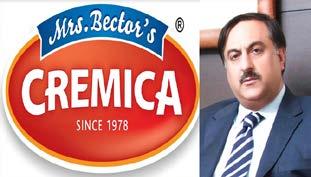
Foods Ltd., said, “The market is experiencing a very robust recovery driven largely by rising outside-thehome consumption. This year, the retail industry will experience robust growth in demand. Additionally, the
business is also expanding at an extremely rapid rate. The holiday season is currently the placement phase and after the holiday season, we expect the growth to continue. It will undoubtedly be far better than
the previous years.”
“Cremica is a farm-to-table producer, and we directly work with farmers to procure their goods. What started as a small home-based business back in 1976, touches one-in-four Indians with its products every day. Cremica was the first to make vegetarian mayonnaise in India, and today, mayonnaise and ketchup products fetch equal profits for the company. With a younger population making buying decisions and along with changes in tastes and food habits in small markets, the popularity of Cremica sauces, ketchups, spreads and salad dressings are gaining popularity in Tier 2 and Tier 3 markets at a rapid pace”, concluded Bector.n
We are a health, bioscience, and sensorial experience company that is changing the world for the better. We’re no longer a flavors and fragrance house. Today, we are building on our heritage of creating sense experiences with the addition of world changing scientific expertise and R&D. This potent combination of science and creativity, along with the passion to serve customers of all shapes and sizes means there’s no limit to the impact we can have.
We aren’t the same IFF. And with our focus on people and planet, our world won’t be the same either.


Boheco, Spaceman & Company and Intergalactic Beverages have launched their contemporary range of beverages – Blissful. Fascinated by natural adaptogens and hemp’s ability to positively impact our state of being, it harnesses these benefits through handcrafted, naturally flavored and mindful seltzers and lemonades infused with functional ingredients designed to stimulate focus, creativity and energy.
Yash Kotak, co-founder and chief marketing officer, Boheco, said, “With people becoming more mindful of their lifestyle choices, it is imperative to make functional ingredients and conscious products more accessible. That was one of the key drivers behind the launch of Blissful. With hemp seeds being recognised as a wholesome superfood in India as well, we have seen an explosion of hemp-based nutrition products. We are excited for people to experience hemp and natural adaptogen infused beverages, for the first time in India, through Blissful.”
Divyansh Gupta, founder and CEO Intergalactic Beverages, said, “We wanted to create a product to break the status quo and bring the benefits of hemp to a larger community in India. We aspire to help our community stay cool, calm and composed by helping them connect with the broader universe and hence their inner selves.”
Aditya Aggarwal, founder and chairman, Spaceman and Company, said, “This is a first of a kind product for India. This product will open the gateway to many innovations in hemp powered mindful beverage space.”n
Surrounded by mesmerising skyline with the gorgeous sights of the Bay of Bengal, Novotel Visakhapatnam

Varun Beach is a sought-after destination in the erstwhile state of Andhra Pradesh. This property promises its true exclusiveness and unparalleled celebration drenched in its charm. Popular in India for its understated grandeur and warm hospitality, Novotel Visakhapatnam Varun Beach acquired the Excellence Award for ‘Best Coastal Hotel in India’, at the latest edition of the Haute Grandeur Global Hotel Awards.
Haute Grandeur is the world's most prestigious Global Hotel, Spa & Restaurant Awards worldwide. It recognises remarkable achievements in delivering consistent, exceptional experiences in the global luxury
hospitality industry. Moreover, the awards discern excellence through feedback from guests , industry experts and not the number of votes by the general public or a panel of judges.
Ravi Rai, cluster general manager, Novotel Visakhapatnam Varun Beach, Novotel Vijayawada Varun, and The Bheemili Resort, said, “We are honored to receive this prestigious award from Haute Grandeur. We believe this will strengthen our position in the market as this recognition encourages our team to exceed our patrons' expectations. In the hospitality industry, it is all about creating the right experiences, and Novotel Visakhapatnam Varun Beach aims to further facilitate the hotel’s promise of delivering unique and unparalleled hospitality for guests.”n
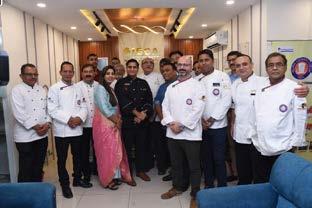
The new campus of the Institute of Bakery & Culinary Arts (IBCA) was inaugurated by Chef Vivek Saggar, general secretary of the Indian Culinary Forum. The event was also graced by various renowned chefs across the hospitality Industry. Meanwhile, the Indian Culinary Forum hosted a Culinary Competition at IBCA’s new campus.
Speaking at the inauguration, Saggar said, “ICF’s aim is not merely recognition of talents but also empowering talents with latest culinary knowledge and skills which not only helps in career development but also helps the country by spreading the footprint of Indian cuisine around the world”.
He added that the hospitality industry is flourishing and
growing exponentially. The Indian hospitality industry is also thriving and is known as the hub filled with global opportunities for bakery and culinary arts. Both culinary arts and bakery demand students to possess a love for food. Though bakery and
culinary arts are interesting careers there’s a lot to learn if you wish to build a career.
Dr Chef Balendra Singh, director, IBCA, said, “This celebration marks the culmination of many long hours of hard work and dedicated study
that our students have so reverently put in to achieve this great success. We are excited to be able to provide a whole new world of possibilities to our students where their personal and professional development is our prime responsibility for them to achieve new heights in their careers.”
He added, “IBCA offers them all the resources they need to advance their amateur careers while receiving professional guidance. Our Bakery and Culinary Arts Instructors offer their knowledge and years of experience to students, paving the way for them to advance their talents. We are able to provide our students with an international curriculum to give them the right exposure for equipping them with the highest standards.”n








Baked snacks are usually perceived as healthier over fried formats; however, tables turn when it comes to baked confectionery like our favourite piece of chocolate cake, an apple pie or that droolworthy fruit tart. Can we improve the health element in sweet baked goods? Can we cherish the rich bite of a Christmas cake and feel good about deriving some nutrition out of it too?
The science of baking requires a minimum fixed input ratio of fat, sugar, and refined flour for delectable outputs. Subsiding these ingredients makes our beloved baked dessert less appetizing. Nevertheless, the year 2021, has brought health to the forefront and people are willing to compromise a bit on their favourite food, in terms of taste.
developments on high-fibre claims from April 2019 through March 2022.
“No added sugar” is considered a trending area of development. As per FSSAI, biscuits, bread, cakes, and pastries can use artificial or highintensity low-calorie sweeteners like Polyols, Stevia, Neotame, Acesulfame K, etc. While all of them come with an aftertaste, introducing taste modulators and maskers is proving to be an effective tool to overcome this challenge. Market leaders like ITC, Britannia, and Unibic have several offerings in this category. Our application team formulated cookies and biscuit recipes with Maltitol, which is used as a 1:1 sugar replacer. The “No added sugar” biscuits/cookies are similar in taste, texture, and processing, with added health benefits, as compared to the ones having sugar. Our application laboratory has developed prototypes and application recipes for egg-free “no added sugar” chocolate and vanilla cookies, sponge cakes, layer cakes, and muffins.

Globally, manufacturers are including high proteins, fibres, and herbal actives in bakery formulations and are cutting down on fat, sugar, and refined flour. This year, according to Innova Market Insight report on Savoury Biscuits/ Crackers in Asia, under the bakery categoryIndia witnessed a 7% increase in new product

Another global top trend “Plant-based proteins/ Vegan,” as per Innova Market Insight 2022 report, is slowly increasing its popularity in India too. It is very nascent for the bakery market though, but our foresighted industry has started working on this as well. One more reason for the partial/full substitution of milk proteins to plant proteins is cost-effectiveness. Dairy proteins have gone pricier by many folds in the past year, and it is a far greater concern with the industry is struggling to meet consumer price expectations. It is often observed that while working on this trend many challenges are faced concerning texture and taste. However, there are solutions designed around unique functional ingredients like Neutral tasting plant proteins, Cyclodextrins, and taste modulators. We at IMCD India have been successful in replacing milk proteins by up to 25% in egg-free sponge cake premixes with plant proteins while still retaining their original taste and texture.
“Natural” is also on top of the list for Millennials and Gen Z consumers. Bakers are shifting to natural colours extracted from plant sources like red beetroot, red cabbage, paprika, turmeric, spirulina, annatto, caramel, carrots, etc. Today, baked stable natural colours are available easily, though expensive but as a healthier choice for consumers.
There are many more trending developments in the bakery space like the fusion of sweet and savoury, the inclusion of traditional spices in baked goods for health benefits, fresh from oven experience, etc. It will not be an exaggeration to comprehend that Bakery in India is changing for good practices, in taste and health.n





Artificial intelligence (AI), is the recently coined term, that has been gaining exponential popularity over the years and is used in almost every industry from construction to automobiles to food. But when addressing issues or developments in the food sector, technology isn't usually the first thing that comes to mind.
Artificial Intelligence in modern times, is all about driving innovation and differentiation towards increasing effectiveness for meat enthusiasts. The meat industry is one such industry that is using AI to optimize its operations and expand its businesses. A select few and aspiring entrepreneurs have succeeded in revolutionizing the meat and fish industry by seeing the potential of AI and judiciously utilizing it for business.
In terms of total meat production, India ranks 5th globally with the production of 8.60 million tonnes of meat in 2019-20. But staffing shortages, hygiene, and delivery of quality products had become a major problem as the deadly pandemic hit direct strikes over people’s lives.
Businesses soon realised the benefits of a well-organized meat market as retail consumers resorted to online meat delivery. Given the considerable technological advancements in both the IT environment and human civilization today, automation in the food business became essential to both food production and delivery. With the ongoing advancements, technology which was initially designed to pick up hefty metal components is advanced enough to pick up delicate goods, process meats using high-tech equipment, develop state-of-the-art cold storage units, and only top calibre meat produces.
Meat processors have worked long to optimise their operations and
Arthur Maurer -The author is founder at MeisterWurst consistently strengthen ties with the customer base, staff, suppliers, and local communities. In order to surpass customer expectations by outperforming competitors in terms of standards for the hygiene, quality, pricing, distribution, innovation, and dependability.
The only way food producers could easily dominate the market is if they could predict how wellliked their items would be before they were released. As producers, manufacturers, or suppliers one should never compromise on quality and should be only committed to using only the finest ingredients and freshest meats, sourced only from select suppliers – tried and tested, and produced in accordance with stringent hygiene regulations and expert supervision.
Artificial intelligence has accelerated the process of developing new products by utilizing predictive analytics and customer data. Technology has significantly improved food packaging by extending shelf life and enhancing food safety. Food quality is enhanced while production costs are decreasing.

The Meat Industry faces various challenges like marketing, quality testing, labour cost, distribution. AI is being implemented to achieve the highest quality standards as it would be used in package integrity, identifying products, and reducing fatigue-induced errors or mistakes. AI would also enhance workers’ safety by reducing cuts and repetitive motion injuries. AIdriven automation would also allow for the rethinking of the meat animal carcass fabrication process.
More advancement has been seen in automating the fabrication of smaller, more uniform species, like poultry or lamb, as well as secondary processing, like cutting chicken nuggets. The meat Industry is a labor-driven industry with high
labour costs and large amounts of energy used. AI has helped in reducing both. E.g. Shortly after the animal is killed and before it enters the cooler, an AI-driven hot fat trimming machine removes fat from both the interior and exterior of the corpse.
The facility can save energy by not using it to cool the fat in the chiller and then reheat it for rendering by removing it while it is still warm. 1.5% to 4.0% of hot fat can be extracted from a carcass by an AIdriven robot that only concentrates on the abdominal fat, on a 400 kg beef carcass, which translates to 6–16 kg of hot fat that can be removed before chilling. Implementing and reliably carrying out hot fat trimming saves energy costs and consumption in processing facilities.
The usage of AI has helped Meat Industry to gain on various fronts like labour shortages, stabilize meat processing operations, reduction of waste, and make factories and storage facilities more environmentally friendly. AI-driven meat processing plants can help in achieving social sustainability by providing workers with better health, safety, and working conditions.

Big data gathered by automation powered by AI may also produce insights that further enhance worker safety, which may improve employee satisfaction and retention.
AI would also help meat processing units to save a vast amount of energy. AI has also helped Meat Industry to improve its marketing strategies through data collection, customer feedback, and selling meat products through websites, social media sites, and apps.
This has not only provided customers with various options but also increased sales and build brands. AI is also used in the Meat Industry for data collection for sub primal (smaller cuts of mutton), like the amount of fat and its weight and dimension. This information on size and dimensions may be used to better optimize livestock production plans by connecting them to live animal production techniques (such as genetics, nutrition, growth technology).
Instead of more advanced mechanical engineering, advances in artificial intelligence technology are resolving the long-standing difficulties in automating meat processing, notably those caused by the variety of meat products. The resulting product will be softwarefocused rather than hardwarefocused in the next generation of automation.
This technology can help meat processors reach a new level of optimisation. However, a strategic evaluation of the technology is necessary, one that considers potential opportunities for return on investment and the development of the meat industry in addition to just the lowered labour expenses.n


Starbucks and Nestlé have announced that Nestlé plans to acquire the Seattle's Best Coffee brand from Starbucks. This transaction is part of Nestlé's focus on driving sustained profitable growth in the coffee category and strengthens the Global Coffee Alliance by allowing both companies to focus on their core strengths.
Seattle's Best Coffee's approachable line of whole bean, roast and ground packaged coffee, and K-Cup pods are available in a variety of roasts and flavour profiles across both foodservice and grocery channels. In addition to Starbucks packaged coffees distributed by Nestlé under the Global Coffee Alliance, Seattle's Best Coffee joins Nestlé's roster of beloved coffee brands in the U.S. including Nescafé, Nespresso and Blue Bottle. The addition adds depth to Nestlé's North America coffee portfolio by further expanding the company's position in the category.
"We continue to deepen our partnership with Nestlé to deliver the best of the Starbucks Experience to our customers in channels outside of our retail stores," said Michael Conway, group president, Starbucks International and Channel Development. "We're confident that Nestlé will continue to grow the Seattle's Best Coffee brand as we focus on our strategy to elevate the premium coffee experience for consumers through the Starbucks brand."
"Our partnership with Starbucks has
confirmed Nestlé's leading position in the dynamic and growing global coffee market," said David Rennie, head of Nestlé Coffee Brands. "With the well-known Seattle's Best Coffee brand, we will continue to build our leadership in coffee by offering consumers more choice for their everyday coffee."
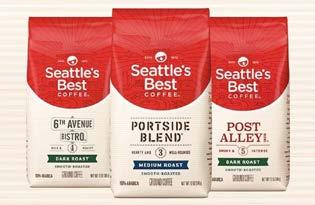
Since forming the Global Coffee Alliance in 2018, Nestlé and Starbucks have brought a wide range of premium coffee products to new markets at a fast pace – including whole bean coffee, roast and ground coffee as well as Starbucks capsules for Nespresso and Nescafé Dolce Gusto proprietary systems. Today, Nestlé distributes Starbucks consumer products and foodservice beverages across more than 80 markets outside Starbucks retail stores under the Global Coffee Alliance. The total global sales of Starbucks products distributed by Nestlé in 2021 reached CHF 3.1 billion.
Through the Global Coffee Alliance, Nestlé and Starbucks will continue to work together closely to develop new, innovative products and go-to market strategies that will amplify the reach and expand the unique experience of the Starbucks brand locally and globally.
We expect to close this transaction by end of 2022, subject to respective Board and customary regulatory approvals. Both companies have agreed to keep the terms of this transaction confidential.n
The Leela Palace, Bengaluru, held a first-of-its-kind event that celebrates Indian women chefs and their excellence. The trailblazing eight-course dinner was executed by an allwomen workforce and headed by four extraordinary women chefs of global repute. The chefs in question - Aarthi Sampath, Amninder Sandhu, Aman Dosanj and Sherry Mehta, are women that truly require no introduction. The event was curated by Dean with the ideation and execution process by Madhav Sehgal, general manager, The Leela Palace Bengaluru.
Shefs at the Leela is a novel attempt to not only celebrate Indian heritage & talent but also foster equal opportunity as a component of true Indian hospitality. While the expertise & brilliance of women should take centre stage, reality presents quite a different picture in India. There needs to be encouragement and recognition considering this.
Putting action behind such promises, Shefs at the Leela is committed to making a difference that inspires generations to come. This growing community is dedicated to cultivating talent, protecting it and watching it flourish in the future.
“When I started out about 15 years ago, I couldn’t see any female chef role models or mentors who were of Indian origin,” stated Aarthi Sampath, one of the four chefs.
The lack of strong role models and ambassadors is another critical issue that is being addressed. This community recognises and appreciates Indian women chefs which can inspire the youth through their hard work and talent. Such a meaningful change can create a real impact, one that sends ripples across a variety of sectors throughout the country.
And it all starts by levelling the playing field.Shefs at the Leela is now an IP of The Leela Palaces and resorts and will be taken forward globally to support the same.
Madhav Sehgal, general manager of The Leela Palace Bengaluru during his opening speech said –‘Why have we not strived towards equal opportunity yet. What could you possibly be waiting for when the industry has been speaking about diversity and inclusion with such confidence for so long. The need of the hour will come staring at us soon and It’s time for a change…and that’s where Shefs at the Leela comes from a strong moral fibre - dedicated to equal opportunity.’
The Shefs at the Leela first edition prided at showcasing an eightcourse dinner which was executed by an all women workforce led by the four globally known shefs –Sampath, Sandhu, Dosanj and Mehta for more than 100 guests and the palace also inspired guests from different sectors who came to support the cause such as Shveta Salve, Rubi Chakraborty, Meghana Harikumar and more.n
Every year on October 20, people all across the world commemorate International Chefs Day. Dr Bill Gallagher came up with this idea in 2004. He was the president of the World Association of Chef Societies in addition to being a renowned chef. He established this holiday in order to honour and recognise the dedication of chefs worldwide on a daily basis. “ Growing A Healthy Future” is the theme for International Chefs Day this year.
How Tamara Kodai commemorated International Chef’s Day :
A chef's competition organised by section, cuisine, and kitchen
required each team to create a meal that embodied the celebration's theme. They were also requested to develop meals with pineapple and mint as the main components
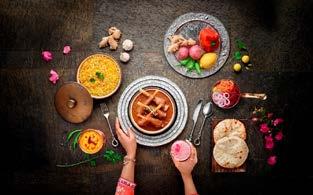
in order to add some competition and interest. Each team cooked two servings of each delicacy, one for presentation and the other for taste. The La Providence deck was set up
with a display of food for everyone watching in the evening. The second set comprised a live counter at the deck where the judges, general manager Sakti and Chef Nitish, were presented with the food for sampling and evaluation.
Later in the evening, the chefs gathered for a cake cutting session at the banquet hall, which was also the location of staff tea time. The formal logo that has been chosen internationally for 2022 was represented in the theme cake. During this moment, the winners were formally revealed with great fanfare. The winning teams will be receiving certificates of achievement at the next town hall.n

Tea in India is not just a beverage; who understands this better than the most trusted tea brand in India - Wagh Bakri? The brand boasts of serving this country with love since 1892. In collaboration with tiqui-taka, a Mumbai-based creative agency, the brand has launched four ads - a 3-ad campaign titled ‘PyaarWaliChai’ and another film that is an announcer Wagh Bakri has been voted as India’s most trusted tea brand.

Parag Desai, executive director, Wagh Bakri Tea Group, states, “We always put humans and relationships first, and we hope we have been able to continue this message through these ads. We found tiqui-taka’s ideas very insightful, and the stories are
simple yet charming. Also, we truly adored their approach of converting real life insights into emotional TVC and make them a must-watch. We have planned aggressive visibility on leading national, international & regional TV channels and across digital platforms.”
Jigar Fernandes, founder and creative head, tiqui-taka, says, “It was a pleasure knowing this beautiful brand inside out. We were moved by their research on customers and the trust and freedom they bestowed on us. We have tried to make our ads with as much love as Wagh Bakri makes their chai.” Jigar Fernandes has also directed these ads through his production house, Third Floor Films.n
Indian cricketer M S Dhoni has joined global investors in backing India’s fastest growing plant protein startup, Shaka Harry and picks up equity in the company. This is a huge development on the backdrop of the company having recently received US$2 million in a seed funding round led by Better Bite Ventures, Blue Horizon and Panthera Peak Ventures. Other investors include; Dexler Holdings, celebrity Chef Manu Chandra and a group of domestic family offices and angel investors.
Dhoni, India’s most loved cricketer, is known to back sector-leading startups across the consumer segment. The plant protein segment has seen a lot of celebrity backing globally. Plant protein diets are
inherently more sustainable and its health benefits are driving more customer adoption.
Speaking about the partnership, Dhoni said, “I love everything chicken, but increasingly, I am looking at a more balanced diet. It is much easier with products from Shaka Harry, which has a wide range that delivers a healthier experience to that of traditional meat dishes. For a growing population, current protein sources aren’t sustainably as scalable. We now have a choice to shift to smarter protein alternatives without compromising on taste and texture. The plant protein segment is an exciting consumer space. The team at Shaka Harry has all the ingredients to build a great company.”n

IFF announced the opening of its new Singapore Innovation Centre, the first in its global network of research, creative and application centres to integrate the technologies, capabilities and expertise of all four business divisions: Nourish, Health & Biosciences, Scent and Pharma Solutions. At nearly 11,000 square meters, it is the largest in the region.

Its launch—following the newly operational Singapore Flexiblend plant in Tuas—marks the latest in the company’s nearly $30 million investment into Singapore. The two sites are part of a series of aggressive investments, the company is making to accelerate innovation, broaden its co-creation capabilities, drive speed to market and enhance accessibility to customers across Asia.
Frank Clyburn, chief executive officer, IFF, said, “By 2030, Asia is projected to account for 60 percent of global economic growth. For IFF, Asia has demonstrated consistent growth, and we see tremendous opportunity in the future. Just this year, we’ve opened innovation centres in US, Latin America, Europe and now Singapore, demonstrating our commitment to advance scientific discovery globally. Together, these significant investments will fast forward innovation across our broad portfolio, supporting our customers in bringing differentiated, new-toworld solutions that benefit people and planet.”
Situated in Singapore’s premier biomedical research hub, the ultramodern centre features more than ten creation, design and analytical
laboratories, a collaboration studio, and culinary and iff.com demo kitchens, providing customers with full sensory capabilities to support each stage of the process from ideation through commercialisation.
It has one of the biggest dairy processing pilot plants in Southeast Asia, replicating large-scale industrial production processes. The centre also houses IFF’s global innovation centre for fabric care powders and personal wash, the largest scent evaluation facility worldwide, and is the first location to support all scent product categories.
Ramon Brentan, IFF Singapore Innovation Centre site leader, and vice president, Greater Asia regional general manager, Scent, IFF, said, “In this integrated space, we will unlock cross-divisional synergies, fasttracking innovation and accelerating new growth opportunities. We are very well positioned to offer a comprehensive portfolio for Asian consumers, offering end-to-end solutions that consumers love in food, beverage, health, biosciences and scent. This center is a true powerhouse of innovation and will further strengthen our position as a strategic co-creation partner to our customers in Asia.”n
Allana Consumer Products Private Limited, a subsidiary of the reputed Allana Group has furthered its offerings in India to include plant-based meat by introducing Beyond Meat. Through the introduction, Allana Consumer Products aims to cater to the growing demand of healthier and guilt free foods in the country and offer the best quality product available in the globe.
Beyond Meat is the pioneer and market leader in United States for plant-based proteins, offering unrivalled taste and quality which many traditional meat eaters often find hard to distinguish. One of the brand’s key attributes is offering consumers a chance to be part of the green revolution taking place around the world, without compromising on taste.
The company has allied with Beyond Meat on a pan India basis to distribute their globally acclaimed offerings in the Indian market. The range includes delicious Beyond Burger, Beyond Sausage, Beyond Meatballs and Beyond Mince which are made of simple, plant-based ingredients and designed to deliver the same taste and texture as that of animalbased meat, while being better for people and the planet. It may
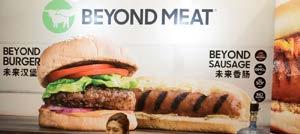

be mentioned that Beyond Meat products do not contain any GMO, gluten, soy, or cholesterol.
Milind Pingle, CEO, Allana Consumer Products, said, “India is moving towards healthier lifestyle choices and people are looking for products which are sustainable and better for the environment. Our aim is to encourage such changes for the betterment of health and lifestyle. Thus, it is our immense pleasure to announce Allana Consumer Products’ collaboration with Beyond Meat to bring the premium taste of meat to the ever-growing demand for vegan and healthy living community in India.”
“These products are a great alternative for conflicted carnivores who are reducing meat and looking to nourish themselves (and often their families) with better protein options. While highlighting how indistinguishable the products are. Beyond Meat is a brand that offers a wide range of products that are rich in terms of quality, starting from the texture that gives the consumer a feeling of eating meat and appetising taste which satisfies the taste buds. Infact, the world-class Beyond Meat range resonates with the forward looking, innovative and progressive values Allana Consumer Products stands for,” concluded Pingle.n
-
m value, in consultation with ements and develop
We are trying to create a niche long term value, in consultation with experts, and prioritize the bakers requirements and develop products that were unexplored in India
m integrated elps us to Our recent ants, petal ower paste t range of te, airbrush e left the ng to meet rm strategy he future of ur portfolio bakers and goals that also And d – Sugar
Luckily some thi change! Today Magic Co stands on its 8 journey that s nothing but the B quality as pure, t
as unique as ever. Every year a dominant quantity of product luxuriated in by many experienc across countries Magic Colo products have become much any baker’s favorite companion

Our Magic Colours India family growing ever since we lofted our production in Ambala, India Everyday our team get to work hoping to do two things : Create great products and make the world a little better place We are passionate purveyors of cake décor material and everything else that goes with a rewarding baking experience Our mission has been to inspire and nurture baker’s spirit.
Premixes, sprinkles, fondant, wafer paper, shine brush, and red velvet solution and so much more We have built our business on the conviction that to have long term success

contribute to financial outlook also And hence we broached a brand – Sugar Shine India
shine brush, and red velvet solution and so much more We have built our business on the conviction that to have long term success
For this we not only have to comply with all applicable legal requirements while ensuring our activities are sustainable, but we must also create value for baking fraternity
For this we not only have to comply with all applicable legal requirements while ensuring our activities are sustainable, but we must also create value for baking fraternity
"WE AIM TO BE THE MOST ADMIRED & LOVED BAKERY INGREDIENT COMPANY IN THE COUNTRY."
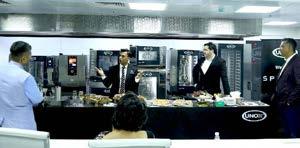
The Burger Club has completed seven years of serving lip smacking burgers in Delhi NCR, cementing themselves as the connoisseurs of burgers in India and earning them the title of the best burger joint according to Zomato. After such extensive experience in the sector, the brand is well equipped to launch internationally. Apart from the expansion within the country, it also aims to open up outlets in Canada and the Middle East too.
Sapna Saini, marketing head, The Burger Club, said, “Currently running 30+ outlets in Delhi NCR, The Burger Club is on an aggressive expansion plan and plans to complete

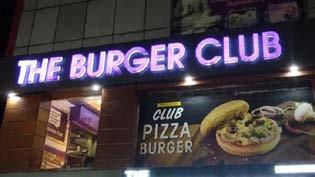
500 stores by 2023. Furthermore, in the next 10 years, we have set a target to have 20,000+ outlets. Apart from Delhi NCR, we are rapidly expanding in the North India region, mainly Punjab. Additionally, new outlets will soon be opened in Lucknow, Kanpur and Hyderabad.”
“It has taken a lot of hard work and persistence for our brand to be where it is today. We have made relentless efforts in serving nothing but the best and unique burgers, be it our fresh handmade patties, freshly homegrown veggies or our no-MSG policy. We do not use any chemicals, preservatives, or artificial flavours. The idea is to deliver highquality, juicy burgers which don't compromise on taste and develop customer loyalty,” concluded Saini.n
Speed-X ushers in a brand-new class of commercial-grade ovens and adds another feather to their glorious cap for the food service sector. India’s managing director Vikram Goel signalled the beginning of the ceremony by cutting the ribbon, joined by director of customer experience Matt Roberts, who had flown in from Unox’s UAE headquarters for the event.
Unox implemented familiar technologies from its existing cooking equipment range, such as Steam.Maxi and Adaptive. Cooking, but many of these are also optimised for the new Speed-X. For example, Multi.Time programming, the technology that allows users to cook different products at different times in the same oven, will allow up to 10 dishes to be prepared at once.
This groundbreaking innovation removes the need for compromise and enhances the efficiency and standard of cooking operations. It cooks food 60% faster than its predecessors, thanks to its two fans, and because of the revolutionary hyper Speed technology, which combines steam, air, and microwave. Food can be heated, cooked, and browned in a matter of seconds. For instance, a sea bass fillet is completely cooked in just 90 seconds, and a toasted chicken tikka kebab is ready in just 180 seconds.
The event was graced by eminent personalities from culinary and hospitality experts and veterans, chef consultants, business domain and influential corporate circles which includes Chef Rakhi
Dealer partners from around India, and the world were present to hear Unox's management team discuss the company's goals for international expansion before taking a tour of the workspace, watching the product demonstrations and the launch of the first-ever self-washing, combi speed oven, Speed-X.
Unox has also equipped Speed-X with cutting edge technology, such as the advanced Digital.ID operating system which utilises artificial intelligence along with Hyper.Connection, and an intuitive interface that would allow users to control and navigate through the oven easily.
“The Speed-X is the first oven to combine the capabilities of a combi oven and those of a speed oven, with an additional selfcleaning capability,” according to Vikram Goel, MD of Unox India. He added “This not only increases the oven's functionality beyond what was previously conceivable but also enables a remarkable rise in commercial kitchen efficiency.”
Revealing ambitious plans for growth in 2022 to 2023, Unox has seen consistent gains in market share across the commercial cooking equipment sector. According to Nicola Michelon, the CEO of Unox, the company is on the path to increase its global revenues from €182 million last year to €230 million in 2022 with the goal of reaching €336 million by 2025.n








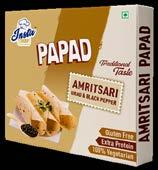
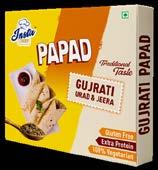
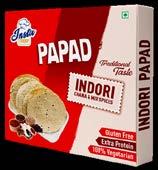
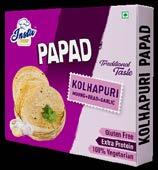
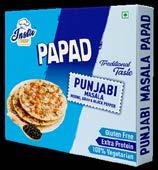




The retail bakery industry in India today is reaching new heights. Had anyone ever wondered it could go so far when it all began in 1880 in a district in Kerala! The firstever bakery in India was set up by Mampally Bapu in Thalassery, Kerala. He studied the taste of cakes closely from the bakers of England and created biscuits and sweet products to attract foreign customers.
Bread had come to India during the time of the Portuguese since they experimented in preparing various types. A little while later, we could see Irani cafes offering a selection of Bread, Naans, Kadak Pav, and Kharis. Today, over a century later, the bakery industry in India is booming with all sorts and varieties of goodies. One can only imagine the array of options when buying bakery products. Right from an assortment of freshly baked biscuits, naans, pavs, pastries, and cakes, one can get it all anywhere anytime.
The Indian bakery market was valued at $7.60 billion in 2020 and is expected to grow at an annual rate of 8.5 per cent and reach a value of $12.39 billion by 2026. This is a fair share among the global bakery industry which was valued at $507.38 billion in 2020 and is expected to grow at an annual rate of 2.5 per cent and reach a value of $574.05 billion by 2026.
Up to 72 per cent of the bakery industry in India accounts for Cookies and Biscuits than any other baked item making it the largest consumer of Biscuits across the globe. This is because biscuits were among the first-ever bakery products introduced in India and have since stayed with people. Besides, Cookies and Biscuits are also popularly known for their high nutrient value and affordable price. In addition to this, traditional Kharis and Rusks also have a high consumption rate in the country. Nonetheless, one can find a range of bakery items like a variety of Biscuits, Bread, Rusks, Cakes, and Pastries in India
today. Packaged cakes and cupcakes are also among the fastest-selling products since people are looking for more options for bakery items to grab on the go.
With the advancement in the variety of bakery products, the methods of preparing the same have also evolved. In the earlier days, woodburning stoves were the most common form of baking bread and other items. It was done with the help of immense manpower. With time, this advanced to microwave ovens, OTG's and more. Today, technology has progressed to the extent that only one person can single-handedly operate a machine that prepares your bakery goodies from scratch. It is safe to say that methods today are more robotic than traditional.
Consumer behaviour can never be the same for consecutive years. People from India have traveled to nations far and wide to study food and to explore, they have tried an array of cuisines and bakery products in several countries. This has resulted in the advent of newage bakery items that were earlier only found internationally.
Today, consumers are willing to explore modern products and items, basically, it has become part of the modernistic society today, to try and explore new things. The bakeries across India have excelled at offering
what their clients love. From new age Pastries, Cheesecakes, Macaroons to the Mediterranean Baklavas and everything of that sort, one can find it in bakery stores across India.
The evolving consumer also demands innovations in patisserie items. For instance, what earlier was a simple ‘Gajar Ka Halwa’ is today an innovated ‘Carrot Cake’ that people love. This is how innovation works. Giving something new to the consumers is always going to be a big hit. Take the Cheesecakes and Macaroons for an example!
Nonetheless, what will not change in India is the consumer's demand for traditional bakery goodies like Kharis, Kadak Pav, and Bun Maska to name a few. It is safe to say that there is quite a balance between traditional bakery products and the new age bakery products.
The retail bakery industry in India had a growth curve of about 12 per cent in 2020; however, due to the pandemic scenario, growth became stationary. According to reports, about 1.3 million tons of baked products are sold every year, but this number dropped low due to lockdown and other Covid-19 restrictions. The prime reason behind the downfall in the bakery industry is the slow supply chain. Due to the lockdown, the movement of vehicles is restricted leading to an impact on the supply chain. Moreover, people are not allowed
to travel or go to work; this has reduced manpower, leading to lesser availability of raw materials to prepare bakery items. Another huge reason is the decrease in purchasing power of the consumers. Covid-19 has affected everyone, people have lost employment, and in such conditions, purchasing power has declined immensely.
The conditions of the industry were believed to become stable and people were ready to get back in action in 2021 since the pandemic had slowed down, but yet again, another wave of the virus has struck the world and industries are again at a loss.

As for the future of this huge industry, we can say that a lot more growth and evolution are yet to come. What one must remember is that a single standalone bakeshop will not do the job. With consumer demands increasing, it is imperative to opt for cloud kitchens, and offer an array of different cuisines. Consumers are asking for more and more varieties, innovations, and unique desserts and baked items. On the other hand, bakers have come up with out-ofthe-box bakes, international recipes, and a lot more, so the retail bakery industry is surely up for big progress in the coming years.
Sustainability and variety should be the main agenda of any bakery shop, and it will surely see itself thriving in this enormous industry.n

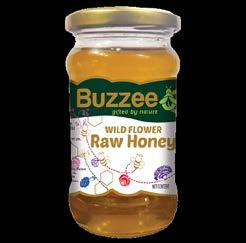



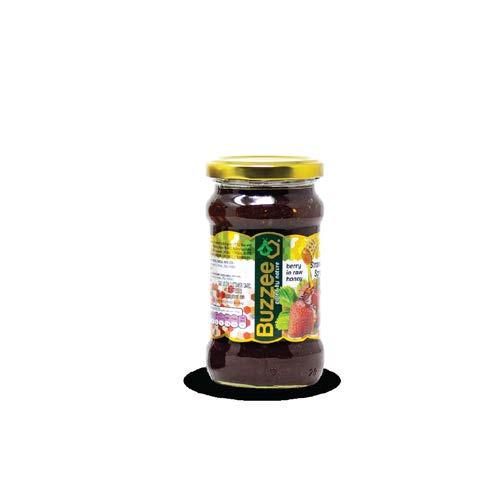
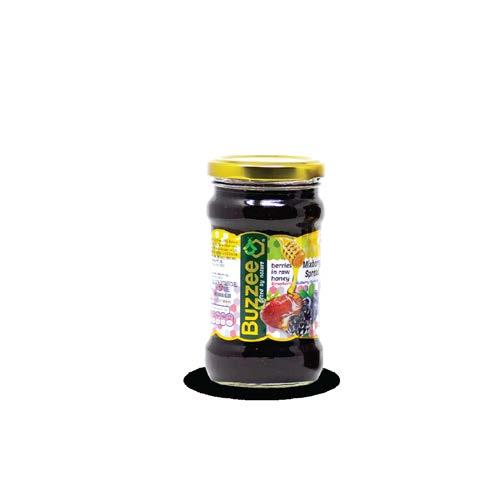







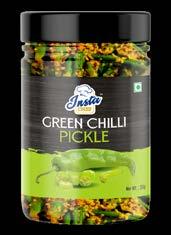

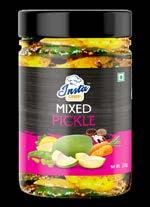

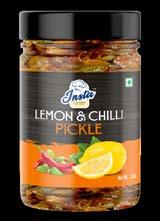


How a former cosmetics salesman outperformed the Coca-Cola Co. and PepsiCo Inc. to establish and dominate a new beverage category, and made himself a billionaire in the process?
Red Bull GmbH founder Dietrich Mateschitz discovered the potential of energy drinks to fuel a fast-paced Western lifestyle and thereby created a huge fortune while revolutionizing the beverage industry and the world of marketing. He died last week, aged 78.

You may not like the product’s saccharine taste or have concerns about the caffeine or disagree with the Austrian’s political views, but Red Bull’s sleek aluminum cans, logo and “gives you wings” slogan are unmistakable. Red Bull sold nearly 10 billion servings in 2021 –one for every person on the planet – and revenue rose 24% to €7.8 billion ($7.8 billion). Not bad for a company based in a sleepy alpine village.

A drinks, media and sports man, Red Bull is humble about how it makes money, and that’s how the press-shy Mateschitz liked it. The financial opacity reminds me of Richard Branson’s sprawling Virgin empire, although the Brit enjoys the limelight more. At a time when Europe is worried about its inability to produce dynamic, world-beating companies, it is worth dwelling on the secrets of Red Bull’s success.
Go Premium, but don’t be too greedy
Mateschitz started drinking energy drinks during a business trip to Thailand in the 1980s. Adapting an
existing recipe, he created a joint venture with business partner Chaleo Yoovidhya to sell a carbonated version of Red Bull to Western consumers, leaving his partner to focus on the Thai and Chinese markets. Taking advantage of his first-mover advantage, he pitched Red Bull as a cutting-edge, hip lifestyle brand rather than a bluecollar one, and priced it accordingly.
Exhausted office workers, students and sports enthusiasts didn’t mind paying $2 for a 250ml serving. With production costs of less than 20 cents per can, according to my back calculation, the margins were sky high. In 2020, for example, Red Bull’s operating return on sales was a generous 26%, according to company records, despite many nightclubs and bars closing due to the pandemic.
Stores also loved the premium prices. That made “everyone eager to have it on their shelves. It was very
valuable to everyone in the supply chain,” says Robert Ottenstein of Evercore ISI.
Although its success spawned hundreds of competitors, some of which sold cans twice the size of Red Bulls for roughly the same money, Red Bull has maintained its high market share by keeping prices “on the edge of the acceptable,” notes Sean McGowan at Roth Capital. Partners. The company “often wouldn’t raise prices at a time when cost increases were causing its competitors to raise theirs,” which McGowan admits is easier for a privately held company than a publicly traded one.
Mateschitz resisted the urge to tinker with a winning recipe. Although he introduced a sugar-free option, a range of organic products and more flavours, Red Bull’s product range is not as diverse as some rivals, although this is something his successor may need to address as consumers begin to embrace more health-conscious drinks. He also didn’t worry too much about manufacturing. Red Bull buys ingredients from its Thai partner and outsources beverage production to Rauch Fruchtsäfte, which also has canning facilities in Austria, Switzerland and the US.
However, Red Bull uses a mixture
of internal and external distributors. The money-spinning US operations, for example, are handled via its own RBDC subsidiary, while listed archrival Monster Beverage Corp relies on minority shareholder Coca-Cola. Red Bull also owns a 50% stake in the Austrian transport company Berger Logistik.
Still, the company remains quite efficient in terms of employee numbers: Red Bull’s 13,600 employees each produce more than half a million euros in revenue. That’s better than Coca-Cola, but well behind Monster’s sales of more than $1.5 million a year. employee.
Red Bull’s relatively active approach freed up funds for marketing, but Mateschitz was not satisfied with traditional print advertising. A grassroots, event-driven approach — “We don’t bring the product to the people, we bring the people to the product,” he told The Economist in 2002 — made Red Bull seem more authentic. Red Bull was a “pioneer in experiential marketing,” says Evercore’s Ottenstein.
While extreme sports and oddball events such as the Flugtag amateur airplane competition were costeffective ways to gain attention, Red Bull’s marketing has become
increasingly expensive. Daredevil Felix Baumgartner’s televised skydive from the edge of space in 2012 cost tens of millions of dollars, but was worth every cent in brand exposure. The company now owns several football teams. Unfortunately, Mateschitz did not live to see RB Leipzig defeat Real Madrid in the Champions League this week, or his main Formula 1 motor racing team secure the constructors’ championship this weekend.
In total, Red Bull spent €1.6 billion on sponsorships and advertising in 2020, or about a quarter of its annual revenue; in years not disrupted by the pandemic, the percentage was closer to 30%. Monster, on the other hand, spends around 21% of sales on marketing. This is one of the reasons why Red Bull’s profit margins are not the best in class, but a company concerned about short-term financial returns would not have invested in
F1 – a notorious money maker.
And while Red Bull Racing has achieved its most recent track success, Mateschitz also had a bit of luck: Only recently has the American public embraced F1, bringing even more attention to the brand.

As a private company, Red Bull does not rely on pressure from outside investors, and its capital structure is decidedly old-fashioned: it uses cash flow to fund investments, not loans. “At Red Bull, we only spend what we’ve earned, not what we might earn one day. I don’t believe in the two-thirds debt, one-third equity formula,” Mateschitz told an Austrian publication two decades ago. Indeed, the recent bankruptcy filing shows of rival Bang Energy’s parent company the dangers of being in a hurry for creditors.

In one respect, it’s a shame that

Mateschitz couldn’t stick to the public markets straightjacket, since there’s no precise estimate of how much Red Bull is worth. With a market capitalization of $47 billion, Monster is one of the best performing US stocks, generating returns of more than 100,000% over the past 20 years.
Thanks to his 49% stake in his company, Mateschitz was free to pay himself more than half a billion euros in annual dividends, which he used to fund various philanthropic and property restoration interests, as well as buying a Fijian private island.
Red Bull’s space-age Hangar-7 complex at Salzburg Airport houses his collection of vintage aircraftn

Recently, I met my friend Swati, who has avoided eating products made of wheat flour for the last 15 years, and suffers from Coeliac disease. She is severely allergic to wheat and develops symptoms like skin rashes and stomach cramps upon consumption of wheat products. Coeliac disease is a chronic inflammatory disorder of the small intestine which can develop into a serious life-threatening condition. It is triggered by gluten, a protein found in wheat and barley.
How Gluten became Hero to Villain?
Gluten is a complex mixture of proteins, especially found in wheat, rye, barley and triticale. 100 gm of wheat contains approximately 8 gm of gluten which provide a unique elastic property to dough for making bread, chapatis, pasta and other bakery outcomes. According to the FSSAI & FDA regulation, glutenfree products should contain less than 20 mg/kg or 20ppm on the food label.
Gluten-Free Baking is an Art-
Without gluten, making bakery products is such a huge challenge for the bakery manufactures. To imitate gluten, product formulators
can add emulsifiers & stabilizers to baking, along with alternative proteins and starches. Combination of ingredients such as, fruits & vegetables, rice, brown rice, corn, maize, cornmeal, sorghum, chestnut flour, carob flour, wild rice, millets, amaranth, buckwheat, tapioca sago, all pulses & legumes could be a good option for making delicious & bubbly baking with different secret agents including egg, apple cider vinegar, sugar, butter, xanthan gum, leavening agent, white vegetable fat, almond milk or rice milk.
The global gluten-free product market is expected to expand extensively between 2022 & 2032, from 6.7 billion USD to 14 billion USD with a CAGR of 9.8 %. It is estimated that 30 % of all Americans avoid gluten not because of only coeliac disease but may be some other health issues. According to research, about 20 million people in the U.S. suffer from gluten sensitivity while in the UK every one person in a 100 has coeliac disease. Approximately, 13% of the UK population needs to avoid gluten for living a healthy & fit lifestyle.
Globally, gluten-free bakery market is segmented into North America, Europe, Asia Pacific, South
America, and middle east & Africa. North America is the largest market for gluten-free bakery products, followed by Europe and South America. In Europe, it is expected to register a value CAGR 11.7 % by 2026 whereas in India, the gluten free food market is projected to have robust growth with a CAGR of 8.92% during the forecast period. Some global key players are Amy’s Kitchen, Kraft Heinz company, Hain Celestial Group & Bob’s Red Mill.
Recent Innovation for Gluten-Free Bakery Products around the Globe-
1- In December 2021, Wild Drum, an Indian Company, launched hardseltzers clear carbonated alcoholic beverages infused with the natural fruit flavorings with Mango and refreshing Lemon Mint.
2-In April 2021, KRBL Limited, India’s first integrated rice company, launched the ‘India Gate’ rice flour with fine, smooth and gluten-free that acts as an alternative of other conventional flour. This could be easily used in making chapatis, bread, snacks, rice noodles and pasta.
3-In April 2021, Signature Brew launched gluten free India Pale Lager, ‘Rewind’ with refreshing & flavorful sensation of pine and citrus.
4-In December 2020, Anusha Food Products, a startup based in Hyderabad, India, launched a ready to cook (RTC) product with dehydrated gluten free F&B brand ‘Zillig’s’.
5- In April 2021, Bob’s Red Mill, is an American company launched Oat crackers made with almond, flaxseed, brown rice and quinoa.
6-Dr. Schar announced a new partnership with gluten free bakery Panista in Germany and Austria, which will see the freshly prepared gluten-free bakery products online in August 2020.
Based on a survey, India is the second fastest growing market for gluten free foods & beverages in Asia-pacific. Gluten-free bakery products, such as bread, cakes, etc., hold the highest market share and are expected to have robust growth in the forecast period. 24 mantra, whole foods, Varya’s, Savourlife and Gullon are some of the brands offering gluten-free cookies and snacks in the Indian market. Mostly Indian gluten-free savory cookies and snacks are customized based on Indian taste, enriched with spices and herbs with nutraceutical point of view as well. Increasing demand of gluten free products are also very popular in obese population.n







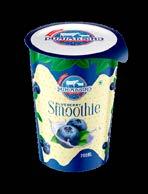

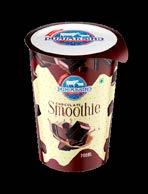


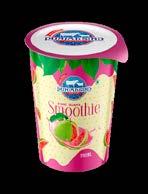





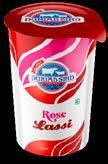

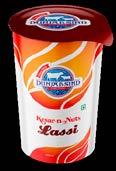
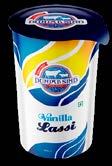
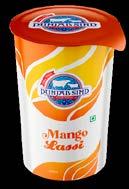
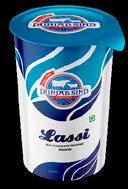
AnnapoornaANUFOOD India 2022 concluded on 16th September 2022 at Bombay Exhibition Centre with footfalls of over 20,000+ trade visitors from around the world. The exhibition witnessed the participation of over 300 companies from India, Australia, Brazil, Italy, Turkey, Indonesia, Peru and Poland. Annapoorna - ANUFOOD India 2022 was jointly organised by the Federation of Indian Chambers of Commerce and Industry (FICCI) and Koelnmesse YA Tradefair Pvt. Ltd. with support from the Ministry of Food Processing Industries, Government of India.
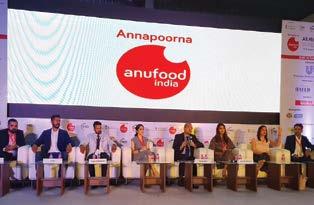

With its focus on the relevant areas of the food processing sector, the Annapoorna - ANUFOOD India 2022 Conference and Exhibition was a significant B2B trade platform for the Indian subcontinent for food processors, suppliers, buyers and traders at home and in international markets. Trade visitors from various segments of the industry, came face to face with trading partners for their specific requirements.
Mr. Prahlad Singh Patel, Union Minister of State, Ministry of Food Processing Industries and Union Minister of State, Ministry of Jal Shakti inaugurated the event on 14th September, 2022. The inaugural session was followed by a State Focused Session on Investment Opportunities in Food Processing Sector & Value Chain. Mr. John Kingsly (IAS) Managing Director, MPIDCL, Govt. of Madhya Pradesh, Mr. Jitendra Kumar Singh (IAS) Director of Industries, Department of Industry, Govt. of Jharkhand, Mr. Dilip Kumar Sahoo, Director Export Promotion & Marketing, Govt. of Odisha, Commodore Rajiv Ashok (Retd), Managing Director, NERAMAC, Mr. MH Banthanal, Managing Director, KAPPEC, Mr. K Mohd. Irfan, Managing Director, Food Karnataka Limited and Mr. Abhijit Ghorpade, General Manager, Marketing, MIDC highlighted the various investment opportunities in their respective states.
Alongside the trade fair, Annapoorna - ANUFOOD India also witnessed several seminars evolving around the various topics in the Food processing sector. Industry leaders highlighted “The New Food Economy” addressing the trends of emerging processes & applications, food products, food safety certification, nano analytical methods, digital technology in Nutraceuticals and also addressing the various challenges in overcoming contaminants in food.
Another highlight was the panel discussion on “Women Leadership in Food” with a special address by Major Mohini Garge Kulkarni (Rtd) on ‘Balancing the Life.’ To support the industry players, the conference also organised sessions on “Market Penetration Strategy” to educate sellers to drive business growth. Additionally, various sessions on Food Safety, Plant-Based Alternatives and the Future of Healthy Food were organised. The three-day event witnessed Masterclass workshops by renowned chefs and mixologists like Chef Shantanu Gupte, Chef Riccardo Scaioli, Mixologist Dhanashree Punekar, Chef Gauri Kekre, Chef Tushar Malkani, Chef Davide Civitiello and Chef Jerson Fernandes.
A FICCI-Nexdigm Knowledge Report, ‘Food Processing Sector in India – Opportunities and Challenges’ was also released on the occasion with an objective to create greater awareness amongst stakeholders on the various
investment opportunities in the sector.
Rajat Kamath Bola, Director, Bolas Agro
“We are meeting all our peers’ competitors and understanding what the whole industry is doing. What are the new trends in the industry? And then obviously technology is ever changing. So, we would need an event like this, every once in a while, to understand changing technology. I think it's, it's a good combination.”
“At Anufood is always an exhibition, which we look forward because it's an international exhibition. So, exhibitors and the different Pavilions are absolutely international standard. The food tasting, which is happening of the food section which are happening apart from the conference, which is happening here. World-class, there are people who have showcasing their products
in a different Manner and I love it. All of us are really happy that it's a very vibrant place.”
Entire experience has been great. Lot of productive meetings that we had and new sources and new supplies that you'll see the industry's going to grow when the ecosystem rules and events like this. Help. The entire ecosystem. Do supplies can find whether buyers convention applies so it's great.
Good experience in this trade fair we are receiving a lot of inquiry, international also regarding the export, our food, our oil. So that is a very good experience.
Koelnmesse - Global Competence in Food and FoodTec: Koelnmesse is an international leader in organising food fairs and events regarding food and beverage processing. Trade fairs such as the Anuga, ISM and Anuga FoodTec are established world leaders. Koelnmesse not only organises food trade fairs in Cologne, Germany, but also in further growth markets around the globe, for example, in Brazil, China, Colombia, India, Italy, Japan, Thailand, the United States and the United Arab Emirates, which have different focuses and contents. These global activities enable us to offer our customers a network of events, which in turn grant access to different markets and thus create a basis for sustainable and stable international business.n


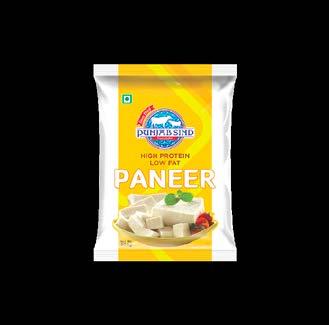

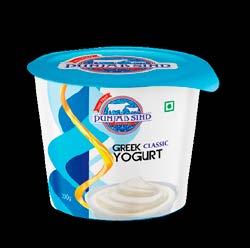

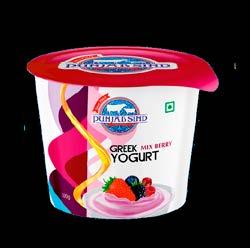

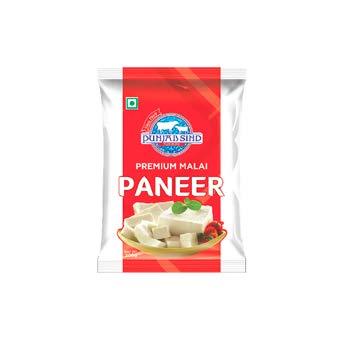


India’s largest International Exhibition for Food & Drink Technology - 16th ANUTEC – International FoodTec India 2022, came to a successful conclusion with over 21000 unique visitors with over 450 Exhibitors from 52 countries along with a series of seminars, workshops and full house conferences discussing sustainability of food industry challenges & solutions, food wastage, nutritional value of food, policy makers’ involvement - to a broader audience, thus making the conversations more engaging and wider in scope.
The Expo was marked by the presence of high-profile dignitaries, from ministers to associations and media from Food Processing Industry and saw various industry bodies discuss innovative solutions suiting to India’s agroclimatic & socio-cultural requirements.

Inaugurating 16th ANUTEC –International FoodTec India 2022, Shri Prahlad Singh Patel, Hon’ble Minister of State (MOS) for Ministry of Food Processing and Jal Shakti of India underlined the need of right techniques & machines for food processing sector said “Reducing compliance is important but alone it will not suffice to ensure the growth of Food Processing Sector, as there is also an urgent need to adopt the right techniques and momentum for processing our farm outputs particularly items like fruits and vegetables with short shelf life. Happy to experience the Innovative technologies at the display that will help create a modern infrastructure which can help in efficient supply chain management across MSME large and small segments. We will do all that we can to simplify the food policy and support the Food processing Industry.” Commenting on the success of 16th ANUTEC, Mr. Milind Dixit, Managing Director, Koelnmesse India YA Trade Fairs said “Not only did we have an increased number of visitors, but 16th ANUTEC also had many success stories, UNIPACK
Engineering Private Ltd closed a bulk order from a single customer, Siddhivinayak Agri Processing Pvt Ltd announced a joint venture with its Netherlands partner Kuipers for their engineering division business. And success stories are still pouring in.”
The Event witnessed participation from leading domestic players including Heat & Control, Clearpack, Syntegon, Hassia India Pvt Ltd, Mamta Machinery, Nichrome, Kanchan Metals, Vedic Pac Systems, Keron Food Processing Technologies, etc. The conferences also saw various industry bodies discuss innovative solutions suiting to our agroclimatic & socio-cultural requirements as well as relaying the Food Industry’s concerns to Shri Prahlad Singh Patel, Hon’ble Minister of State (MOS) for Ministry of Food Processing and Jal Shakti of India. Conferences & Seminars at the 16th Anutec included:
• ‘Central Government's Ministry of MSME Schemes and Support to Food Industry’ organised by Chamber of Advancement of Small & Medium Businesses (CASMB) on Day 1, where
Shri Praful Umbre, Assistant Director (Grade-II), Office of Development Commissioner (MSME) spoke about the growing MSME sector in India and discussed measures to strengthen it further. Shri Praful also highlighted the benefits and financial & training support that Government of India extends to the MSME sector.
• ‘Intelligent IntralogisticsExperience The Flow’ conducted Ashwinkumar Inamdar, Manager of Business Development, Siemens on Day 1, was aimed at enhancing knowledge about the need for digitalization or a digital
twin. Shedding light on the problems faced by manufacturers, such as the changes or disruptions in technology brought about by artificial intelligence and robotics.
• ‘Star Awards & Conference’ starting off with a talk on ‘Packaging at Crossroads’ organised by IFCA on Day 2, concluded with the Awards ceremony – ‘IFCA Star Award’ a prestigious award for the flexible packaging and carton packaging industries that serves as a platform for encourage creativity and drive continuous improvement.
• National Seminar on ‘Sustainability of Food Industry Challenges & Solutions’ hosted by All India Food Processors Association on Day 2 focused on technical and policy requirements that can elevate the Indian food industry to global benchmarks. While raising Industry’s concerns & challenges to Shri Prahlad Singh Patel, MoFPI, Dr Subodh Jindal, immediate past president, AIFPA highlighted “We request the government to help by letting adjudications take place within the State of Registration of the Entrepreneur that will give him more time to attend to production rather than running to distant locations and getting stressed under unnecessary harassment and exploitation, which kills sustenance.”
• This was followed by a panel discussion on ‘Ease of Doing Business’, chaired by Dr. Prabodh Halde, Chairman, West Zone-AIFPA & head-Technical Regulatory Affairs, Marico, which discussed the need of adequate training and benefits of right policies & measures required for an optimal business operation.
• The ‘Technical session’ organised by FSSAI, chaired by Dr. Ravishankar CN, director & vice chancellor, ICAR – Central Institute of Fisheries Education, Ministry of Agriculture & Farmer Welfare, Govt of India, focused on consumer quality and brand building tools. M A Tejani, former president, AIFPA & managing director, Gits Foods Products spoke about the
challenges of extended producer responsibility (EPR) & central ground water authority (CGWA) issues.
• Plant-based: A Canvas for Innovation’ a conference by Innova Market Insight on Day 3, focused on the innovation in the plant-based sector. Talking about myriad ways of how brands could garner and retain the interest of Indian consumers, Padmaja P.B., Research Analyst presented major insights and identified future trends to drive this ever-evolving category.
• Guided Factory Tour – a technical live demonstration of various latest technology & innovation in the food & beverage processing, packaging industry displayed live & running at the exhibition show floor, aimed at giving buyers a feel of visiting a factory premises, evaluate/experience the live machine & gather technical insights from the experts of the respective booth.
• Packaging Theatre – where Innova Market Insights displayed India's top trends and concepts in sustainable and innovative packaging by setting up product examples to inspire manufacturers to develop their own innovative packaging. Mr Bhushan Patil, lead consumer insights, Innova Market Insights added, "The aim is to drive packaging innovation, and as well as approach them in terms of helping them develop their brand and their packaging."
Having asked about his experience at the event, Mr. Michiel van Erkel “Agriculture Counsellor, Council General, Netherlands Ambassy, shared “I think it's very impressive to see the size of the exhibition, the number of companies being represented here; You see a lot of high-quality equipment being exhibited. I'm impressed. Overall, a very positive atmosphere with lot of companies, and fruitful discussions with the audience. So yeah, Positive at all.
Talking about the arrangements and the footfall at the exhibition, Uday Kshirsagar, Managing Director, PIAB comments, “Coming here made us feel that we are on the right track. We are focussed towards understanding the fast-changing dynamics in the market and getting along with it and delivering at that level the output which in sync with our five-year plan,”.
Mr. Anant Chitale, Chitale Group said “I think ANUTEC – International FoodTec India has been a grand success. This is a really big event after long time, and it’s good to see




and meet lot of people here. When you visit such kind of events, you meet a lot of people in one platform, which would otherwise take months to visit. Apart from meeting, you also learn about the latest trends and ways to grow your business”.
Mr. Sunil Kumar Marwah, CEO, Sector Skill Council for food Processing FICSI. said “I think the ANUTEC & ANUFOOD are taking place at the right time; with industry getting restarted in the positive frame of mind, such an event is most welcome. I could see so many new things, new machineries and foreign suppliers displaying their solutions. This is a constant process, a new technology means efficiency, effectiveness, and cost reduction”.
The event was supported by All India Food Processors Association (AIFPA), Association of Food Scientist & Technologist of India (AFSTI - Mumbai), Chamber for Advancement of Small and Medium Businesses (CASMB), Indian Flexible Packaging & Folding Carton Manufacturers Association (IFCA). n

From its earliest origins in Ancient Egypt thousands of years ago to the diverse preparation styles emerging from Asia, bread has become a staple food in many cultures around the world.
Bread is a universal food, with numerous variations depending on which part of Asia you are in. Each market's relationship with bread has a fascinating history. We look at how this food grew in popularity among Asians, as well as Asia’s modern secrets to creating soft, fresh bread.
While rice is a popular dish in Asia, bread sits alongside at the top as a must-have item in almost all households. Many markets have their traditional dishes or products that are made from bread.
The introduction of bread in Japan started from trading with the Portuguese during the mid-16th century. Bread was later massproduced as a convenient item to feed hungry soldiers and eventually became a regular inclusion in the Japanese diet. Over time, Japanese bakers started to get creative with a variety of stuffed buns, ranging from cream-filled to curry-stuffed loaves.
Bread has a very long and rich history in China. With new methods of preparation introduced by travelers on the silk route, bread grew quickly in popularity. From the mantou (steamed bun) to the bing (unleavened wheat bread), the variety of savory and sweet preparations in this area seems endless.
The origin of bread in India came from two routes. First, similar to Japan, the Portuguese brought their version of the "pao" to this part of the world. The second route was via the Middle East. Today, India offers a wide range of ancient and contemporary preparation styles, from the traditional roti or paratha (types of flatbreads) to the modernday street favorite "pav".
Similarly, practically all Asian
markets have a history with bread and local adaptations that have been consumed for decades. If in Asia, you venture further southeast, you will discover Banh mi, a crispy bread used to make sandwiches in Vietnam, or Pandesal, a popular breakfast or teatime bread roll in the Philippines. In Malaysia, you will find canai, a soft, stretchy flatbread similar to the roti.
The preparation method for all these variations of bread differs across Asia. However, no matter which part of the continent you are in, the common element among all these types is its softness.
Bread can be consumed at breakfast, lunch, teatime, dinner, and even between meals as a snack. As our pace of life becomes ever faster, this fast-moving item becomes even more popular. Noticeably, Chinese consumers have been shifting from the traditional congee or rice porridge and noodles to a breadbased breakfast.
Even the modern-day Japanese Shokupan, which translates as "food bread", is gaining popularity across Asia for its cloud-like fluffiness and milky sweetness. What makes bread the new go-to item is its softness and convenience.
One of the key differences between bread made in Asia and the rest of the
world lies in the dough's chemistry, where there is a higher quantity of fat and sugar which works together to create the soft texture. But that is just one part of the story.
Asian-style bread is also made by adding a Japanese-invented dough called tangzhong. In this method, an equal amount of flour is cooked with water or milk to form a paste. The Japanese realized that, by cooking the flour, the dough absorbs all the water. This cooked dough is added to the rest of the bread mixture and contributes to the bread's ultra-soft, pillowy, and tearable texture.
Along with the need for soft bread, consumers across Asia are increasingly paying attention to food labels. The ingredient list on packaged bread products significantly influences their decision to purchase.
Citrus fiber is a natural ingredient that satisfies the clean label and soft bread requirements. Owing to its ability to bind water, when incorporated into a bread formulation, citrus fiber can retain moisture in bread and keep it tasting fresher for longer. The emulsifying properties of citrus fiber also present the option to reduce fat and egg in bakery products without compromising the softness of bread.
The freshness of bread is associated with its softness. But when it is
stored for a long time, it becomes harder and gradually loses its original elasticity and wetness. Staling begins the moment bread comes out of the oven. The change of texture is due to the recrystallization of starch components.
While it is a natural process, specific enzymes can be used to reduce staling and preserve softness. What’s more, enzymes are considered a processing aid in many markets across Asia and considered a clean label option, allowing manufacturers to maintain the softness of bread over an extended period, reduce food wastage, and improve customer satisfaction.
According to www. researchandmarkets.com, the Southeast Asia bakery products market was valued at USD 14.4 billion in 2021 and is projected to grow at a CAGR of 7.7 percent between 2022 and 2027. The ability to create a product that meets consumer expectations on taste and texture while maintaining a clean label has significantly contributed to the booming bread industry in Asia. DKSH offers a wide variety of ingredients that cater to the bakery industry's latest trends. Contact us to learn more.

• How Bread Came to Japan: A Brief History of Japanese Bread
• An intro to Traditional Chinese Breads inc. Bing and Mantou
• Technique Thursdays: Why Asian Breads Are Softer Than European Breads
• Southeast Asia Bakery Products Market - Growth, Trends, COVID-19 Impact, and Forecasts (2022 - 2027)

• How bread is riding the changing breakfast market in China
• When the basics matter, bread brings comfort – as long as it delivers on freshness



What is seasoning?
The words 'seasoning, masala, spices, flavours' are many a time used interchangeably, and general definitions that one might find on sources like Wikipedia convey, ‘Seasoning is the process of supplementing food via herbs, salt, or spices intended to enhance a particular flavour',there by affirming the interchangeable usage of the terms.
However, Larousse Gastronomique (the bible for food connoisseurs), states that to season and to flavour are not the same thing! The word seasoning is a far more complex term, true to its definition of supplementing food to enhance a particular flavour or a set of flavours. It includes Spices, Salt, Sugar, Flavours, Colours, Flavour Enhancers, Gums, Fillers, AntiCaking Agents, Acids and Souring Agents, and more.
It can be sweet or savoury. Each of the ingredients present in the seasoning mix thus has a specific role in the overall flavour delivery of the particular food product. It is thus a complex interplay of various senses (taste, aroma, colour) that needs to be mastered to deliver an outstanding seasoning.
Furthermore, the base product has its own set of flavour parameters, and to deliver an overall intended flavour, some taste parameters need to be masked, some enhanced, and some need to be moderated. Thus, a well-designed seasoning combines and complements the various flavours to deliver ‘the final eating experience’ etching the product in the consumer’s mind. Teams of experts comprising market researchers, chefs, food technologists, and others work together to create seasoning mixes which are then applied to the base product at the appropriate stage in the manufacturing/preparation process to deliver the intended flavour.
For example, we have Masala Maggi to the Spanish Tomato Tango Lays, the French Onion Dip Pringles to the Pani Puri flavoured Dry Dosa, and
many more such products.
In terms of applications, seasonings find applications across a wide range of processed food products ranging from snack foods to sauces/ dressings, marinades to coatings, and also in the beverage, dairy, bakery, confectionery, and meat processing categories. To enable consistent delivery of flavour across such a wide variety of applications wherein some food products are consumed as it is, some are fried, cooked, steamed, baked, roasted, sauteed, it requires a thorough understanding of the art, craft, and science of flavour delivery as well as the whole set of complex ingredients to make it work under all situations.
One might argue - why use seasoning at all? We can make do with mixing and blending spices, herbs, powders, and so on every time during the manufacturing process.


An important point to note here is that spices, herbs and so on are agriproducts, and thus, the taste, texture, colour, flavour, vary from farm to farm, location to location, and more.
In addition, there are a number of additives that are used to stabilise the flavour, enhance the flavour delivery of specific flavours, adhere
to the surface during the application process, deliver a specific colour, ensure a specific type of aroma, and so on.
The applications are numerous, and thus, the brands need to ensure that every time their product is consumed, there is identical and consistent flavour delivery. For example, KFC chicken served to a customer in any corner of India at any point in time during the course of the year is the exact same standard and consistency. This cannot be achieved if the KFC chicken marinade has to be made separately at each and every outlet, each and every time. Thereby, the role of standardised seasonings becomes important which is manufactured by larger seasoning manufacturers who ensure products are delivered consistently as per defined specifications.
In terms of applications, seasoning is one of the largest and fastest-growing categories in the food ingredient space. It finds applications not only in the traditional food segments but also in the latest and hottest trending opportunities,-plant-based foods, vegan foods and so on. It is estimated that this market has been growing at a rate of 7-12% over the
past decade. Seasonings include various categories, and some of the categories (condiment sauces, chutney and relishes, dressings, and tomato pastes and purees) have outperformed overall the growth rate and exhibited CAGR as high as 11-13% in the past five years.
As per Euromonitor International Sector Capsule Reports, the market for sauces, dressings, and condiments reached US$3.6 billion in 2021, and the market of savoury snacks reached $6 billion in 2022. Seasoning is a very critical ingredient in both these fast-growing market segments and thus is expected to demonstrate a double-digit growth rate in the coming years. This is expected on account of rapid urbanisation, the conversion from unbranded to branded products, and the demand for convenience and diverse palate experiences of different people, among other things.
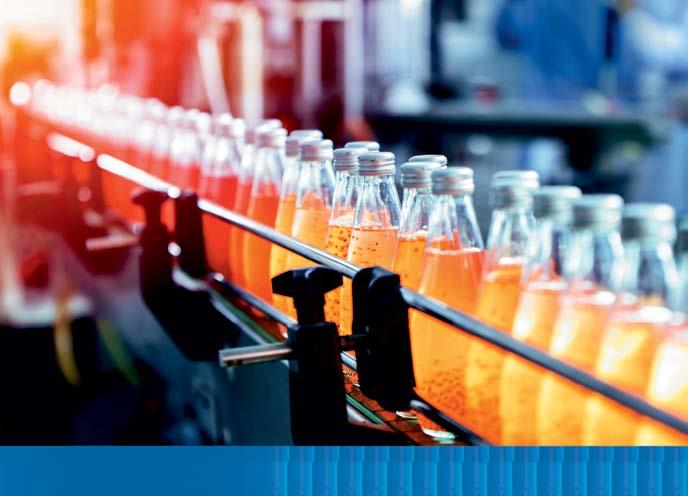
A combination of large MNCs with their international affiliations and partnerships with global food majors are major drivers of growth. In addition, there are several domestic players who have established a significant presence in this space due to their agility, nimbleness, and a better understanding of local palate requirements. The segment has gotten a big boost from the robust innovation that is happening courtesy of the numerous start-ups that have come up during the last 5-10 years.
Several insurgent brands are entering the market such as clean label foods, specialised regional sauces and gravies, baked and popped snacks, ready-to-cook and ready-to-eat noodles/pastas and meal solutions, alongside new food ingredients like tempeh, innovative mithai and namkeens, the rapid rise in branded nuts, seeds, and dryfruits, functional foods, have showcased the potential for profitability. This has kept the wheels of the seasoning manufacturers and suppliers active and turning. With innovation in top gear and rapid growth in the food processing sector, only the sky is the limit.





The Food Safety and Standards (Labelling and Display) Second Amendment Regulations,
2022, have been made public by the FSSAI. On May 1, 2023, these laws will go into effect and apply to the labelling of different kinds of bread.
According to the notification, food companies are required to include specialty ingredients and a minimum percentage of such components as flour on their products.
For whole wheat bread, the percentage of specialty ingredients, such as wheat flour, must be at least 75%; for wheat bread or brown bread, the percentage must be 50%; and for multigrain bread, the percentage of non-wheat grains must

be at least 20%.
If a prefix is applied to the phrase “bread” on the label, the food firm must specify the specialised ingredients that must be included.
Similarly, the announcement specifies labelling criteria for various breads, such as milk bread, which must include at least 6% milk solids, honey bread, which must contain at least 5% honey, and
cheese bread, which must contain at least 10% cheese, according to the announced regulations.
Furthermore, breads made with these specialty ingredients must contain at least 15% oats, 15% cracked wheat/ dahlia, 2% wheat germ, 1.5% edible whole egg solids, 10% candied fruits, 20% triticale fruit, 20% rye flour, 10% raisins, 5% bran bread, 15% protein, 2% garlic, and 5% flax seeds, sesame seeds, and pumpkin seeds.
The notice also specifies pan masala labelling standards. Where, according to the notification, makers of pan masala must include the warning line ‘CHEWING OF PAN MASALA IS INJURIOUS TO HEALTH,’ which must span 50% of the FoPL n

Parle Products, India’s largest biscuit company, is in talks with private equity firm Bridgepoint to consider buying Dr. Gerard, the second largest biscuit producer in Poland.
The Polish biscuit maker, which was once part of Groupe Poult of France, was bought by EU middlemarket-focused Bridgepoint for an undisclosed amount in October 2013. The company is currently valued at Rs. 1,000-1,200 crore, though one of the people said it could be as high as $200-300 million euros (about Rs .1,600-2,400 crore).
Bridgepoint appointed Houlihan Lokey for Dr. Gerard’s exit earlier this year, but the ongoing RussiaUkraine war and the geopolitical volatility in Europe slowed the process considerably. There is still no
guarantee that Parle’s negotiations will lead to a transaction.
Dr Gerard, which was launched in 1993, has a portfolio of over 200 biscuits and salty snacks and two production facilities in Poland. Its core business is in cookies and chocolate products. Its products are exported to 30 countries.
If successful, this will be the first acquisition by Parle, a conservative company with a focus on building brands instead of buying them.
“Biscuit makers are all trying to upgrade their offering through premiumisation. Parle is still predominantly a mass brand, and an acquisition will help access a ready-made portfolio. Dr Gerald has been a target for a long time because it’s PE-owned, but Parle has never bought anything in India, let alone cross the border.

For a record 10 years in a row, Parle has topped the rankings for most chosen FMGG brands, according to a report by Kantar India. It is followed by Amul, Britannia, Clinic Plus, and Tata Consumer Products in the latest 2021 report, which ranks the most chosen FMCG brands
based on consumer reach points.
The company, which retails brands such as Parle G, Monaco, and Melody, posted sales of Rs 13,682 crore for March 2021, outpacing rivals including Britannia and Nestle to become the country’s biggest food company by annual revenuen




One of India’s favourite Momos brands, Prasuma, is innovatively spreading its wings and is now launching Bao Buns. Another first in the Indian market, Bao Buns are a variety of dumplings, hugely popular globally for their flavourful fillings and their delightfully fluffy, soft, and airy texture.


Bao buns are a veritable staple food in Japan and extend to Southeast Asia. Sold as a highly accessible snack for all, a majority of Bao Buns are bought from convenience stores such as 7-Eleven. Interestingly, with Reliance bringing 7-Eleven stores to the Indian market, Prasuma’s Bao Buns will have a familiar place to call home. The stuffed buns are filled with a sweet or savoury filling. Consumers can enjoy 6 delicious variants, including the authentic
Bao filling of BBQ Chicken or Char-Siu, as well as variants designed for the Indian palate, including Butter Chicken, Chicken Keema, Veg Pizza, Spicy Veg, and Chocolate Crunch.
Lisa Suwal, CEO of Prasuma, stated that they are a customercentric brand that thrives on customer love. “We know India’s food lovers always want something new and exciting, and Bao Buns are our answer to their cravings. They’re a version of our widely loved dumplings, which will give them access to a whole new flavour profile and texture experience.”
Prasuma is now looking forward to enamouring its customer base yet again with its Bao Buns, with which it aims to sell 100 million units per annum in year three n
Two High Courts have disagreed on whether rusk is bread; the Supreme Court must now decide.
It’s a never-ending debate. Whether the Rusk is a bread or biscuit, bread without moisture or simply rusk?
Well, now the Himachal Pradesh High Court, after 12 years, has come to the conclusion that rusk is actually bread-sans-moisture and, as such, exempt from Value Added Tax (VAT). Yet this matter is not yet settled. In Meghalaya, the High Court had earlier decided that rusk was different from bread. Hence, there would be no exemption from VAT.
The distinctions are significant because VAT has been subsumed into Goods & Services Tax (GST) and continues to be relevant in the present taxation regime. Also, considering contrary rulings by different High Courts, the issue is expected to be finally settled by the Supreme Court.
Meghalaya High Court, in a ruling on rusk, was categorical that rusk was not bread and, as a valueadded-product, would not get exemption from VAT. According to the bench, the answer is obvious: bread is bread and rusk is rusk, and the two cannot be equated, upholding the appellate


judgement about no exemption. Applying the common parlance test, the court questioned whether a person desirous of buying bread would ask for rusk at a shop.
However, the Himachal HC has a different view. It is said that a majority of the ingredients in rusk and bread are the same and the difference in ingredients in the two products is minuscule, and it is only the duration of the baking which makes the difference between the two.
“And as per the dictionary meaning of rusk, it would be established that it is nothing but virtually a slice of bread dried and cooked again in the oven,” a division bench of the court said recently while disposing of a case filed by SS Food Kather in 2010. The petitioner had moved court after being levied VAT at the rate of 13.5 per cent for rusk.
The bench took note of observations made by the Allahabad High Court in a similar matter where it was said that the word rusk had been defined in the Concise Oxford English Dictionary to mean a dry biscuit or a piece of twice-baked bread, especially as prepared for use as baby food. Similarly, Collins Cobuild Advanced Learner’s English Dictionary defines rusk as a hard, dry biscuit that is given to babies and young childrenn



Spago Foods brought Magnolia Bakery to India in 2019, and the new location in Hyderabad is Magnolia Bakery’s first outlet outside of Bengaluru, India.

Mangolia Bakery, known for its freshly baked sweets such as cupcakes, cakes, pies, cheesecakes, icebox desserts, cookies, and its distinctive banana pudding, will open its first Indian store on October 14, 2022, in Hyderabad. The business has been delighting guests with its warm, inviting décor, baked-from-scratch pastries, and artistically decorated cakes and cupcakes since it originally opened its doors on Bleecker Street in NYC’s West Village in 1996.

Magnolia Bakery now includes corporately owned shops in New York City, Chicago, and Los Angeles,
as well as franchise outlets in Dubai, Abu Dhabi, Riyadh, Amman, Doha, Manila, and Istanbul.

The 3,000 sq. ft. location, located in the centre of Hyderabad on Road Number 45, Jubilee Hills, allows customers to savour freshlybaked delicacies at one of the 23 tables, watch cupcake and cake icers masterfully adorn cakes and cupcakes, or snap selfies in front of the store’s mural.
The artwork depicts parodies of Hyderabad’s Char Minar and the gigantic Buddha statue, as well as New York City’s Statue of Liberty and famous yellow cabs, as well as the brand’s signature banana pudding, cupcakes, and cake pieces. This in-store artwork illustrates Magnolia Bakery’s mission to bring a taste of New York to Hyderabadn
Macarons are turning into a ‘statement dessert’ as they are increasingly making a place for themselves in Indian weddings and gift hampers. These amazing gooey biscuits originated in the 1700s in French kitchens and slowly made their way to India via the Portuguese. The original creators of the French macaron, Ladurée, now plan a fast expansion across India.
The original French macaron has been more visible than ever on Indian coffee tables and dessert stands. Ladurée, known to have the authentic macaron recipe, entered India last year and has big plans for expansion.
Macarons are already visible at fancy weddings and parties and are fast replacing chocolates and sweets as festival gifts in India.
Earlier, the French macaron travelled to India with the Portuguese and became naturalised in Tamil Nadu bakeries. Bakers substituted the traditional almond meal with flour made of the locally available cashew and the Tutikorin Macaron was born.
The traditional French macaron is made with egg white, icing sugar, granulated sugar, almond meal, and food colouring. The flavours match the colours as well. For instance, a pink macaron is naturally expected to be a rose-flavoured one. The culinary bible, Larousse Gastronomique, cites the macaron as having been created in 1791 in a convent near Cormery in central France.
Some have traced its French debut to the arrival of Catherine de Medici, as her Italian chef introduced the macaron to France during the Renaissance. The macaron won
instant fame as a sweet indulgence. Another nugget of history traces the macaron to two Carmelite nuns who sought asylum in Nancy during the French Revolution. They baked and sold macaron cookies to pay rent. These nuns came to be known as the ‘Macaron Sisters’. It was in the 1830s that the macaron, as we know it today, came into existence as two crisp biscuits with a filling of jams, liqueurs, ganache, and spices. Originally called the “Gerbet” or the “Paris macaron”, this exotic version of the macaron was created by the legendary Pierre Desfontaines of the French patisserie Ladurée.

A well-baked macaron is always crunchy with a chewy texture. The flavours should be smooth and not hit the palate with a sharp taste. Undoubtedly, macarons are considered among the most difficult things to bake.
Chandni Nath Israni, who runs the Indian chain of the French Ladurée, explains how macarons are becoming popular in India. “No big Indian wedding today is complete without a stunning macaron tower at the dessert counter. It is also a preferred gift by the tasteful. Many gracious homes have them placed on their tea charis. “Ladurée macaron towers are popular and work well in corporate parties as well as for weddings.” Ladurée has ambitious expansion plans in India too. “We are planning to open 20 stores over the next four years in India with an average investment plan of Rs 50 crore,” Israni told Business Today.
Coffee and tea are the best pairings for macarons. Pick flavours that complement your beverage—for instance, if you want to eat one with your coffee, it would be a good idea to pick a vanilla or pistachio macaron, besides, of course, the obvious coffee ones.n

Hershey India Pvt Ltd., a subsidiary of The Hershey Company, a leading global snacking giant and the largest producer of quality chocolates in North America, has announced the addition of a new variant Hershey’s Kisses Hazelnut ‘n’ Cookies to its Kisses range, under a unique platform ‘Nutty-For-You,’ to allow consumers to express their emotions to their loved ones. With this launch, the business hopes to expand on its unique promise of producing unforgettable moments amongst loved ones.
Millennials and Generation Z are increasingly choosing novel methods to communicate appreciation to their loved ones, typically through chocolates. In keeping with this philosophy, Hershey India has added Hershey’s Kisses Hazelnut ‘n’ Cookies to its chocolate line. This new product combines melt-in-your-mouth chocolate with crispy roasted hazelnut and its trademark cookie crumbs. Kisses are individually and creatively wrapped and provide a delightful experience.
To provide its customers with unique chocolate experiences, the firm has continually added creative goods to its inventory. With the introduction of the new product, the company expands its distinct offering, allowing customers to communicate their emotions to their loved ones.
Geetika Mehta, MD, Hershey India, commented on the introduction, saying, “Brand Hershey’s seeks to allow moments of connection.” Continuing this story, we are excited to present Hershey’s Kisses Hazelnut ‘n Cookies for customers looking for new ways to show their love, whether on special occasions or in everyday life. When words fail to express themselves, our customers may ‘Say it with a Kiss.’ The launch of this one-of-a-kind platform ‘Nutty-For-You’ and first-of-its-kind mix of milk chocolate, hazelnut, and cookie pieces will be a beneficial addition to Hershey’s Kisses’ present range. With this launch, we hope to provide our customers with amazing experiences.n

